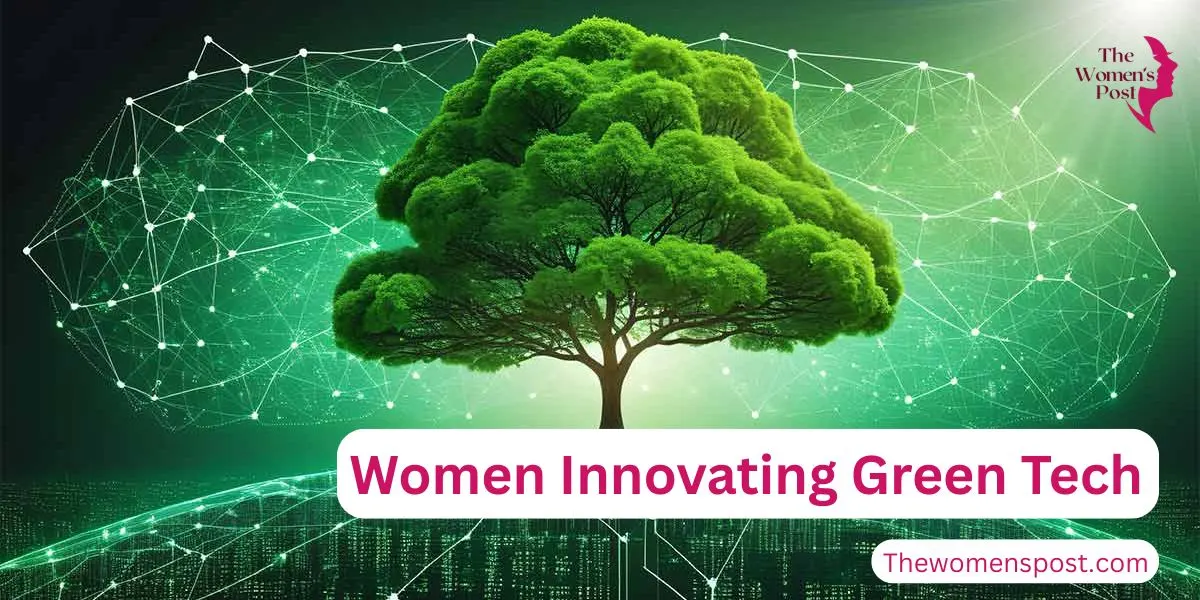How Technology Can Empower Women To Lead The Charge In Sustainable Innovations

The world has huge challenges such as climate change and shortages of resources. Sustainable innovations bring promise through a means of living well without destroying the environment. However, women spearhead most of these efforts, spearheading women empowerment in sustainability. They introduce new ideas based on community needs. However, restrictions such as a lack of education and finances limit many. Technology shifts this. Technology provides tools for women to learn, connect, and build on the leadership role of technology in sustainability. In 2025, digital changes open doors further than ever. This tale considers how technology assists female leaders spearheading sustainable tech solutions. It depicts authentic ways and examples that move people to action.
Why Women Are Key to Sustainable Innovations
Women have always loved taking care of families and communities. This makes them resilient in sustainability and drives women empowerment. They observe issues at close range, such as water shortages or wastage in urban centers. Research indicates that women occupy only 22% of STEM positions in large economies. However, when a woman is in the lead, projects work better, ensuring gender equality in sustainable technology leadership. They consider equitable solutions that benefit all.
Breaking Barriers with Technology
Technology comes into the picture here. It shatters obsolete barriers constructed by distance or prejudice. Online courses enable women to learn renewable energy at home. Applications monitor carbon footprints in real time. Such tools translate ideas into action, empowering women with technology for green innovations.
Overcoming Educational Barriers

Also Read: From Classroom To C-Suite: Closing The STEM Education Gap For Women
Education is one of the major hurdles. In most locations, women have to balance work and home responsibilities. Conventional schools seem inaccessible. But the world wide web turns this around. Sites such as Coursera or Khan Academy provide free classes on solar energy or eco-design. Women learn at their own speed, even while having children. This develops skills quickly, enabling women empowerment.
Real-World Impact
For example, in rural India, apps educate on water-saving farming tricks. Women farmers now head local green clubs, highlighting female leaders spearheading sustainable tech innovation. Tech also transmits learning in webinars. Specialists from other places mentor new leaders. This evens the playing field, allowing women from small towns to access global discussions and promote gender equality in sustainable technology leadership.
Building Connections Through Networking
Networking follows. Solitude spoils innovation. Women in rural areas lack mentors or collaborators. Social media and platforms such as LinkedIn address this. They connect women across borders, promoting women empowerment. An engineer in Kenya can discuss wind turbines with one in Canada. Women in Tech Global Summit in Osaka 2025 brings together thousands online. There, women share experiences on AI for sustainable energy. These connections ignite collaborations. Collective projects grow exponentially with multiple brains, showcasing the power of technology in women’s leadership towards sustainability.
Amplifying Visibility for Women’s Innovations
Visibility is very important. Great ideas remain hidden without a platform. Blogging and YouTube provide women with the platforms to share their work. A good little video on how to recycle plastic can go viral. That attracts funders and enthusiasts. Crowdfunding platforms such as Kickstarter also assist. Women make pitches for green startups and raise money fast, empowering women with technology for green innovation.
Success Stories
An example: A group in Brazil funded a solar app for low-income homes. It illuminated villages and trimmed bills. These victories instill confidence. More women take action when they witness victory, promoting women empowerment.
Leveraging Data and Technology for Smarter Solutions
Data tools bring intelligence. Facts, not assumptions, are required for sustainability. Large data apps crunch statistics on pollution or forests. Women leaders use them to identify trends. For example, an app indicates flood risks in a city. She creates better drains with that information. This makes plans more resilient, empowering women leaders for sustainable tech solutions.
Mobile and Virtual Reality Tools
Mobile technology is for busy lives. Phones enable women to review project figures in transit. From market to meeting, they remain in command. VR takes it to the next level. Women pilot green buildings in virtual space before constructing. No trial, no error, if it doesn’t work. They fine-tune designs until flawless, saving time and planet, and empowering women.
The Role of AI and Blockchain in Empowering Women
AI is a game changer. It streamlines hard work, leaving women for great thoughts. In agriculture, AI irrigation reduces water consumption by 30%. African women head these systems now. They instruct robots to forecast rain and regulate pipes. This increases crops without destruction, empowering women using technology for clean innovations. AI also detects prejudices in clean plans. Women in ethnic jobs ensure technology serves everyone, not the wealthy alone, advocating for gender equality in sustainable technology leadership.
Blockchain for Transparency
Blockchain introduces trustworthiness. It follows supply chains as clear as day. A garment producer verifies her materials are green. No fraudsters. Women leverage this to sell truthful products and capture markets.
Real-Life Examples of Women Leading the Charge
Lisa Dyson and Air Protein

Also Read: Women’s Participation In Tech Contract Work Nearly Doubles, But Gender Pay Gap Persists
Real women demonstrate this power. Consider Lisa Dyson, founder of Air Protein. She converts captured carbon into food protein. No cows required, so reduced farm gas—24% of global emissions. Her technology feeds humans green. Dyson began in a lab, yet online networks enabled scaling. Now her business feeds thousands in a sustainable way, highlighting women empowerment.
Dr. Ayana Elizabeth Johnson and Urban Ocean Lab

Also Read: 100 Women In Tech Drive Singapore’s Digital Future As Nation Celebrates 60 Years
Another is Dr. Ayana Elizabeth Johnson. She cofounded Urban Ocean Lab. With data tools, she drives ocean regulations that safeguard sea life worth trillions. Tech charts reefs and follows fish. Johnson connects with international teams through apps. Her work saves coasts from storms, highlighting the power of technology in women’s leadership for sustainability.
Rachel Malka Barr and Climate Tech Propel
Rachel Malka Barr spearheads Climate Tech Propel. The organization invests in women in climate solutions. Barr utilizes AI to connect ideas and money. Her platform identifies leading projects quickly. In 2024, it supported 20 women founders. One developed recycling robots for plastics. Barr explains that technology allows women to dream big without doors being slammed, empowering women. In Saudi Arabia, AI supports women startups as well. It does admin, so creators work on green ambitions such as clean water apps. Such examples show that technology makes passion change, empowering women by technology for green inventions.
The Future of Women in Sustainable Tech
Future 2025 promises more. Conferences such as the WFWPI Global Vision Summit discuss AI for peace and green family life. UNESCO African Women in Tech and AI program teaches hundreds to do health and farm AI. Women will define ethics as AI expands. They advocate for equitable code that benefits the poor, advancing gender equality in sustainable tech leadership.
Long-Term Impact
Work hybrid tools enable them to live and lead. By 2030, women-led green companies will double, experts forecast. Investments are routed to diverse teams—they win more, advancing women empowerment.
Addressing Challenges for Broader Impact
Challenges persist. Not everyone has devices or the internet. Bias in AI can overlook women’s opinions. But remedies arrive. Free Wi-Fi drives and bias-check apps are effective. Governments need to up the ante with training budgets. Companies as well—hire more women in technical positions.
Conclusion: Empowering a Greener Future
In the end, technology hands women the reins in sustainable fights. It opens minds, builds teams, and scales dreams. From apps that save water to AI that heals earth, female leaders driving sustainable tech solutions lead with heart and smarts. Their charge lights a fairer, greener world, driven by women empowerment. Everyone gains when they thrive. The time is now—support their tools, join their networks, and watch change bloom.









